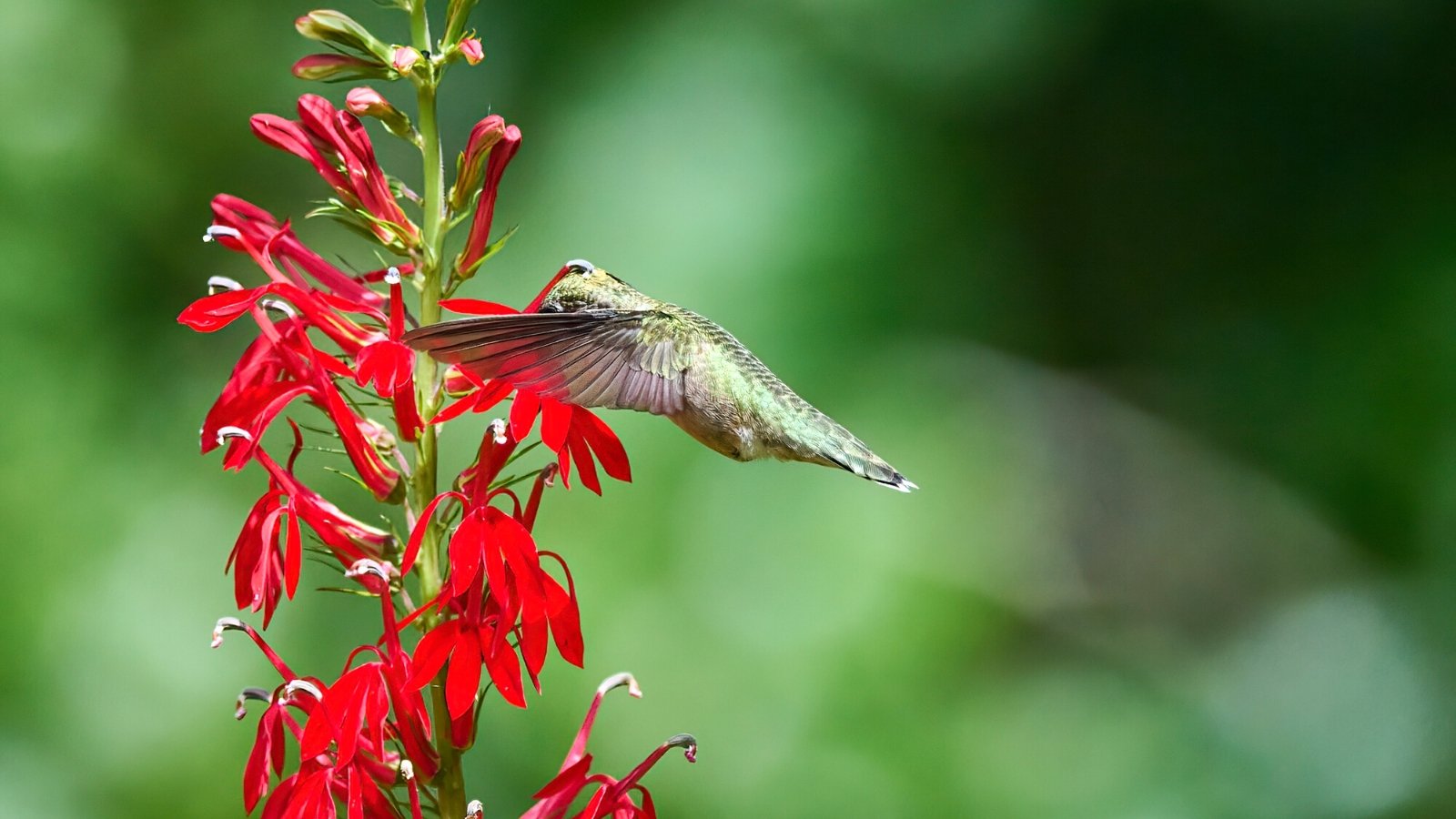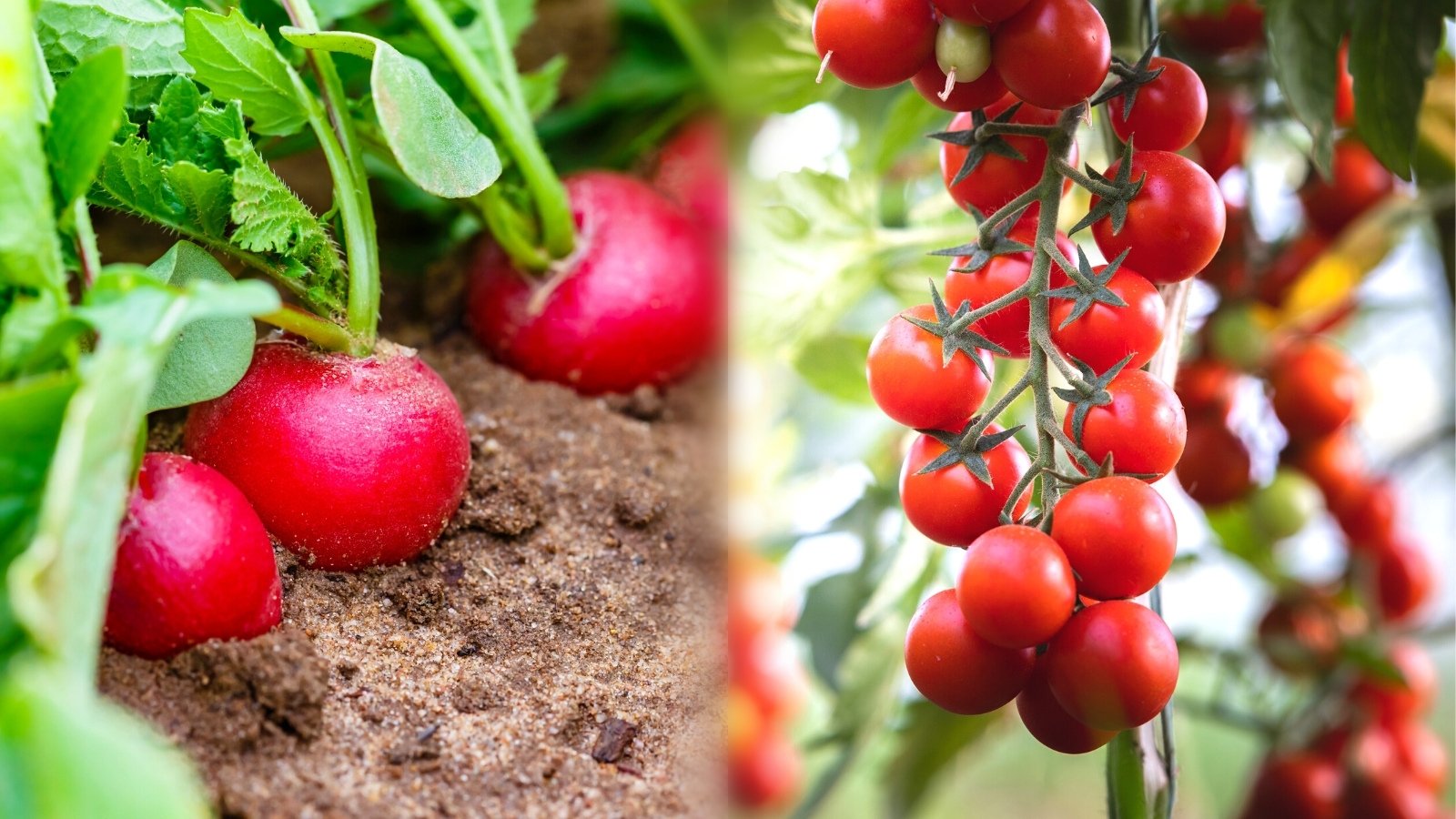Tomatoes and radishes may be found together in a salad, but can they cooperate in the garden? If you’ve decided to plant these two, you may wonder if you can conserve some space by planting them together.
Tomatoes are North America’s #1 garden crop. The plants are beginner-friendly and fruit for a long period. When trellised, they also leave plenty of space for companion planting beneath their canopy.
Radishes are among the fastest-growing root vegetables. They can handle a little shade and don’t take up much room. Let’s look at each crop’s habits and needs to determine whether radishes and tomatoes make good neighbors.
The Short Answer
Tomatoes and radishes make good garden companions. Tomato plants will provide dappled shade for radishes that prefer cooler weather. Radishes will deter certain pests away from tomatoes and act as a weed barrier. For the most success, prune and trellis your tomatoes so there is space in the under-canopy for the radishes.
The Long Answer

When discussing planting two or more plants together in one bed, we use an agricultural process known as companion planting. This practice has been used for centuries by farmers all over the world as a means to benefit the harvest of certain vegetables.
Benefits of Companion Planting
There are several ways that plants can serve one another in this way. Understanding good plant companionships is key to understanding each species’ growth habits and needs. Some of the benefits of companion planting include:
- Increased Pest Protection – Some plants are more desirable to pests, while others are less. By planting things that mask the scent of those attractive plants, you can give your veggies a boost of protection. Some plants draw in helpful predatory insects to help control the populations of pests.
- Improved Flavor – Certain crops may improve the flavor of others they are planted close to. Basil is reputed to improve tomato flavor, making these two a great match in the kitchen and the garden.
- Soil Enrichment – Plants like clover and legumes have nitrogen-fixing roots. These plants increase nitrogen levels in the soil, making them excellent companions for heavy-feeder crops like tomatoes or brassicas.
- Shelter and Support – Larger plants can help companions by providing environmental support. For example, beans can climb corn, or tomatoes can provide shade for root vegetables or greens.
- Increased Pollination – Certain plants are especially good at attracting pollinators. These are great to have as companions because pollinators tend to stay in an area and collect as much nectar as possible. They will be drawn in by one plant, and they will stay to pollinate others nearby.
- Space Saving – Planting two crops together in the same area can conserve space in your beds.
Companion Planting Gone Wrong
Not all plants make stellar companions, though. Just as they can contribute positively in some ways, certain incompatibilities make it detrimental to place two plants in the same bed. Some of the less positive effects plants can have on one another include:
- Increased Exposure to Pests and Diseases – If two plants are specifically vulnerable to a particular pest or disease, they won’t make ideal companions. If one crop is affected, the other will be more likely to also be affected, and you can lose both.
- Nutritional Incompatibility – If two plants need a different nutritional supplementation, or one is an especially heavy feeder, they won’t make great neighbors.
- Environmental Incompatibility – Species with environmental needs, like water, soil, or sun exposure, don’t always work well together. Typically, cool-weather crops will not be compatible with warm-weather crops.
With these factors in mind, let’s determine the compatibility of these two crops.
Season

Tomatoes are warm-weather crops. They do most of their growing and fruiting in the heat of summer. Radishes prefer cooler weather. This seems to make the two a bad match, but the size and growth habits of the plants make an exception here.
Tomatoes are large plants that provide ample shade for root vegetables, making it possible for radishes to thrive in warmer weather than they typically prefer. This makes them good neighbors.
Sun Exposure

Radishes like full sun. If kept in the shade for too many hours of the day, they will focus too much energy on green growth above the ground, taking energy away from the roots, which are the part we eat. Tomatoes also like full sun, but recall that tomatoes, as they grow larger, can cast shade on radishes.
This could be a potential incompatibility. Recall, though, the difference in season between the two. Radishes will be content with 6 hours of sun per day. During the summer months, when the sun is present for more hours of the day and is closer and more intense, the tomato’s shade makes it possible for radish to thrive as long as it gets that 6 hours.
Moisture

Both plants like to stay moist. Tomatoes are happy to be watered daily, while radishes will tolerate a bit less, but keeping the soil moist is beneficial for both. This is an area of compatibility.
Soil

Root vegetables need soil that doesn’t compact easily for maximum growth. Clay-heavy soil or otherwise compact soil will inhibit their growth and make more oddly misshapen vegetables. Radishes like soil that is slightly acidic and has good drainage. Tomatoes are happy with these soil conditions, so this is another area of compatibility.
Nutrients

Tomatoes are heavy feeders, preferring a fertilizer with lower nitrogen content. Excess nitrogen will cause more green growth, taking energy away from the development of the fruits. A fertilizer with a higher potassium content is the best formula for tomatoes. The EG team’s favorite organic tomato fertilizers are Espoma Tomato Tone and Espoma Liquid Tomato Food.
Fortunately, these work great for radishes as well. Radishes don’t need as much fertilizer as tomatoes do and can survive off the excess that their neighbors don’t absorb. You can still fertilize your tomatoes every 4 weeks without harming your radishes.
Since tomatoes are heavy feeders and radishes are not, tomatoes will get all they need, and radishes won’t have to process a heavy load of fertilizer. While they don’t have the exact same needs, this companionship is not detrimental to either plant in any major way.
Space

Tomatoes have a long tap root that can reach up to 3’ long. Their lateral roots include a system of smaller roots that can form at any point along that tap root. Radishes have compact root systems that won’t interfere with tomatoes and can help aerate the upper soil levels.
These two will share soil space nicely in the garden. Because radishes will grow faster than tomatoes, they help break up the soil to help young tomatoes take off.
Pollinators and Pests

Here is where radishes really help out tomatoes in a big way. Radish tops will help to lure flea beetles away from tomato plants where they can do more damage. Because the portion of the radish that we want is under the ground, the flea beetles won’t harm them. This is also called “trap cropping.” The radish greens trap and distract the pests and can be harvested more quickly.
Planting radishes around your tomatoes will help deter other harmful insects from ruining your tomatoes and won’t cause harm to the roots of your radishes. However, radishes won’t draw many pollinating insects unless left to flower, which is uncommon. It would be helpful to plant another pollinator attractor along with these two, like borage.
Final Thoughts
Radishes and tomatoes have a solid relationship in the garden as companions. Tomato plants partially shade and protect radishes in warmer weather, allowing for a longer growing period. Radishes will make the soil more inviting and help to protect tomato plants from harmful flea beetles.
Planting these two together can also maximize your growing space. We say to go ahead with this advantageous companionship. You won’t regret it!














